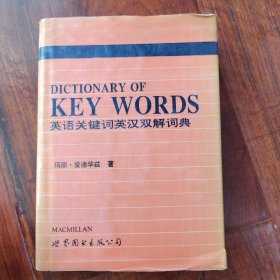
多体物理学基础:原理和方法(英文版)
¥ 57 6.0折 ¥ 95 全新
仅1件
河北廊坊
认证卖家担保交易快速发货售后保障
作者Wolfgang、Nolting 著
出版社世界图书出版公司
出版时间2015-07
版次1
装帧平装
货号6架1排1-3
上书时间2024-09-28
- 最新上架
商品详情
- 品相描述:全新
图书标准信息
- 作者 Wolfgang、Nolting 著
- 出版社 世界图书出版公司
- 出版时间 2015-07
- 版次 1
- ISBN 9787510098857
- 定价 95.00元
- 装帧 平装
- 开本 24开
- 纸张 胶版纸
- 页数 602页
- 字数 490千字
- 正文语种 英语
- 【内容简介】
- 《多体物理学基础:原理和方法(英文版)》利用现代研究方法研究多粒子体系物理体系,并且通过大量合适的练习演示了它们的应用,帮助读者加深对多粒子体系主要内容的理解。全书共分6章,内容包括:二次量子化;多体模型体系;格林函数;相互作用粒子体系;微扰理论;有限温度微扰理论;习题解等。
- 【作者简介】
- Wolfgang Nolting(W.诺尔廷,德国)是国际知名学者,在物理学界享有盛誉。本书凝聚了作者多年科研和教学成果,适用于科研工作者、高校教师和研究生。
- 【目录】
-
1 Second Quantisation
1.1 Identical Particles
1.2 The "Continuous" Fock Representation
1.3 The "Discrete" Fock Representation
1.4 Exercises
1.5 Self-Examination Questions
2 Many-Body Model Systems
2.1 Crystal Electrons
2.1.1 Non-interacting Bloch Electrons
2.1.2 The Jellium Model
2.1.3 The Hubbard Model
2.1.4 Exercises
2.2 Lattice Vibrations
2.2.1 The Harmonic Approximation
2.2.2 The Phonon Gas
2.2.3 Exercises
2.3 The Electron-Phonon Interaction
2.3.1 The Hamiltonian
2.3.2 The Effective Electron-Electron Interaction
2.3.3 Exercises
2.4 Spin Waves
2.4.1 Classification of Magnetic Solids
2.4.2 Model Concepts
2.4.3 Magnons
2.4.4 The Spin-Wave Approximation
2.4.5 Exercises
2.5 Self-Examination Questions
3 Green's Funetions
3.1 Preliminary Considerations
3.1.1 Representations
3.1.2 Linear-Response Theory
3.1.3 The Magnetic Susceptibility
3.1.4 The Electrical Conductivity
3.1.5 The Dielectric Function
3.1.6 Spectroscopies, Spectral Density
3.1.7 Exercises
3.2 Double-Time Green's Functions
3.2.1 Equations of Motion
3.2.2 Spectral Representations
3.2.3 The Spectral Theorem
3.2.4 Exact Expressions
3.2.5 The Kramers-Kronig Relations
3.2.6 Exercises
3.3 First Applications
3.3.1 Non-Interacting Bloch Electrons
3.3.2 Free Spin Waves
3.3.3 The Two-Spin Problem
3.3.4 Exercises
3.4 The Quasi-Particle Concept
3.4.1 One-Electron Green's Functions
3.4.2 The Electronic Self-Energy
3.4.3 Quasi-Particles
3.4.4 Quasi-Particle Density of States
3.4.5 Internal Energy
3.4.6 Exercises
3.5 Self-Examination Questions
4 Systems of Interacting Particles
4.1 Electrons in Solids
4.1.1 The Limiting Case of an Infinitely Narrow Band
4.1.2 The Hartree-Fock Approximation
4.1.3 Electronic Correlations
4.1.4 The Interpolation Method
4.1.5 The Method of Moments
4.1.6 The Exactly Half-filled Band
4.1.7 Exercises
4.2 Collective Electronic Excitations
4.2.1 Charge Screening (Thomas-Fermi Approximation)
4.2.2 Charge Density Waves, Plasmons
4.2.3 Spin Density Waves, Magnons
4.2.4 Exercises
4.3 Elementary Excitations in Disordered Alloys
4.3.1 Formulation of the Problem
4.3.2 The Effective-Medium Method
4.3.3 The Coherent Potential Approximation
4.3.4 Diagrammatic Methods
4.3.5 Applications
4.4 Spin Systems
4.4.1 The Tyablikow Approximation
4.4.2 "Renormalised" Spin Waves
4.4.3 Exercises
4.5 The Electron-Magnon Interaction
4.5.1 Magnetic 4f Systems (s-f-Model)
4.5.2 The Infinitely Narrow Band
4.5.3 The Alloy Analogy
4.5.4 The Magnetic Polaron
4.5.5 Exercises
4.6 Self-Examination Questions
5 Perturbation Theory (T = 0)
5.1 Causal Green's Functions
5.I.1 "Conventional" Time-dependent Perturbation Theory
5.1.2 "Switching on" the Interaction Adiabatically
5.1.3 Causal Green's Functions
5.1.4 Exercises
5.2 Wick's Theorem
5.2.1 The Normal Product
5.2.2 Wick's Theorem
5.2.3 Exercises
5.3 Feynman Diagrams
5.3.1 Perturbation Expansion for the Vacuum Amplitude
5.3.2 The Linked-Cluster Theorem
5.3.3 The Principal Theorem of Connected Diagrams
5.3.4 Exercises
5.4 Single-Particle Green's Functions
5.4.1 Diagrammatic Perturbation Expansions
5.4.2 The Dyson Equation
5.4.3 Exercises
5.5 The Ground-State Energy of the Electron Gas (Jellium Model)
5.5.1 First-Order Perturbation Theory
5.5.2 Second-Order Perturbation Theory
5.5.3 The Correlation Energy
5.6 Diagrammatic Partial Sums
5.6.1 The Polarisation Propagator
5.6.2 Effective Interactions
5.6.3 Vertex Function
5.6.4 Exercises
5.7 Self-Examination Questions
6 Perturbation Theory at Finite Temperatures
6.1 The Matsubara Method
6.1.1 Matsubara Functions
6.1.2 The Grand Canonical Partition Function
6.1.3 The Single-Particle Matsubara Function
6.2 Diagrammatic Perturbation Theory
6.2.1 Wick's Theorem
6.2.2 Diagram Analysis of the Grand-Canonical Partition Function
6.2.3 Ring Diagrams
6.2.4 The Single-Particle Matsubara Function
6.3 Self-Examination Questions
Solutions of the Exercises
Index
点击展开
点击收起
相关推荐
— 没有更多了 —



















以下为对购买帮助不大的评价